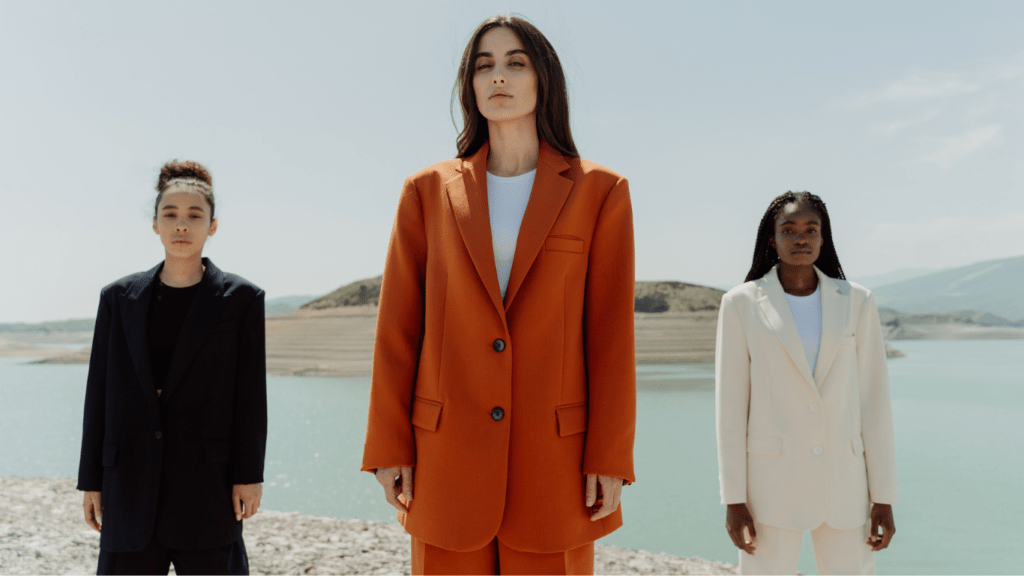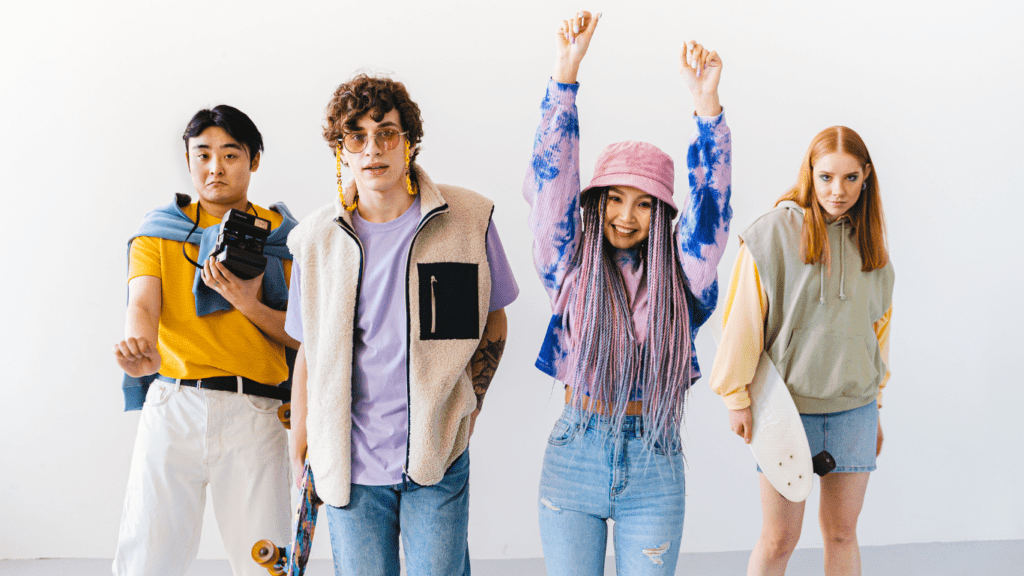The Evolution of Inclusive Sizing
Fashion brands have started recognizing the need for diverse sizing, leading to a seismic shift in the industry towards inclusivity. The journey has been long and complex, reflecting societal changes and growing awareness.
Historical Context of Fashion Sizing
Traditional fashion sizing has long adhered to standardized measurements that excluded many body types. Historically, sizes catered primarily to a narrow demographic, often ignoring the reality of diverse body shapes and sizes. For example, the 1950s sizing standards in the US were based on limited studies, failing to represent the actual population. This exclusionary practice left many people without clothing options that fit properly, perpetuating a sense of alienation and discomfort among those whose bodies did not conform to the “ideal” size.
Early Inclusive Initiatives
Inclusive sizing initiatives began to gain traction in the latter half of the 20th century. Initial efforts, though limited, marked the beginning of a wider acceptance of diverse body types. Lane Bryant, founded in 1904, was one of the first brands to focus on plus-size clothing. Torrid, launched in 2001, specifically targeted the plus-size teen market. These early pioneers set the stage for more significant changes, leading other brands to consider the importance of inclusivity.
By the 2010s, the movement gained momentum with high-profile campaigns such as Dove’s “Real Beauty” and Aerie’s “Aerie Real,” showcasing unretouched photos of diverse body types. These campaigns challenged the industry’s narrow standards, urging consumers and brands to rethink beauty.
The Impact of Body-Positive Movements
Body-positive movements have redefined societal beauty standards, encouraging self-acceptance and inclusivity. These movements champion celebrating all body types, breaking away from unrealistic ideals.
Key Figures in the Body-Positive Movement
Pioneering activists have driven the body-positive movement forward. Tess Holliday, a prominent plus-size model, cofounded the #effyourbeautystandards social media campaign, encouraging people to share unfiltered photos. Ashley Graham, a well-known model, emphasized body diversity by appearing on numerous magazine covers. Lizzo, a celebrated singer and advocate, has used her platform to promote self-love and body acceptance.
Social Media’s Role in Promoting Body Positivity
Social media has played a critical role in disseminating body-positive messages. Platforms like:
- TikTok
enable individuals to share empowering content, reaching a broad audience. Hashtags such as #bodypositivity and #loveyourself have gained traction, creating supportive communities. Influencers often showcase diverse body types and challenge conventional beauty standards, further normalizing body positivity in mainstream culture.
Leading Brands Embracing Inclusivity
Fashion brands are increasingly recognizing the value of inclusivity. Below, I explore notable examples that have set the standard for embracing diverse sizing and body positivity.
Case Study: Brand A
Brand A, known for its trendy apparel, has revolutionized the market. It started by extending its size range to include sizes 00 to 40. Marketing campaigns feature models of various body types, ethnicities, and ages, reflecting true diversity. They also offer adaptive clothing, catering to individuals with disabilities. The brand’s social media presence emphasizes body-positivity through hashtags like #AllBodiesAreBeautiful, helping to build an inclusive online community.
Case Study: Brand B
Brand B focuses on high-quality, sustainable fashion and inclusivity. Their inclusive size range spans XS to 5XL. They employ fit models representing different body shapes to ensure accurate sizing. Campaigns spotlight real customers, highlighting stories of confidence and self-love. Through collaborations with body-positive influencers, Brand B has created relatable, appealing content. Their commitment to ethical production means inclusivity aligns with sustainability.
These brands exemplify the shift towards a more inclusive fashion industry, proving that inclusivity and style coexist seamlessly.
Consumer Reactions and Market Trends

Inclusive sizing and body-positive brands have reshaped the fashion landscape. Consumers are responding positively, with increased demand for more inclusive options.
Customer Experiences
Customers report feeling seen and valued by brands offering inclusive sizing. Reviews often highlight the emotional impact of finding stylish clothing in extended sizes. For example, many mention feeling more confident and excited to shop when they see models who look like them. Social media is flooded with testimonials from individuals who have struggled for years to find clothes that fit well and now express joy in finally having options that cater to their body type.
Market Growth and Expansion
The demand for inclusive sizing has driven significant market growth. According to a report by Global Industry Analysts, the plus-size clothing market is expected to reach $257.1 billion by 2027. Brands that adopt inclusive sizing see a substantial increase in customer loyalty and sales. For example, since expanding its size range, Brand A has reported a 30% increase in revenue. Additionally, partnerships with body-positive influencers amplify brand visibility, helping companies reach broader audiences and solidify their market position.
Challenges and Criticisms
Despite the progress in inclusive sizing and body-positive brands, the fashion industry still faces several challenges and criticisms.
Common Criticisms Faced by Brands
- Criticism from Consumers: Many brands still face backlash for tokenism, where inclusivity seems more like a marketing strategy rather than a genuine effort. For example, some brands may feature diverse models in ads but provide limited size options in stores.
- Lack of Representation: Even with attempts at inclusivity, some brands are criticized for not adequately representing all body types, ethnicities, and disabilities. Consumers notice when campaigns lack authenticity and fail to include diverse voices.
- Pricing Differences: Inclusive sizing often comes with higher prices, which draw complaints from consumers. It’s essential for brands to balance costs without making plus-sized or adaptive clothing more expensive than standard sizes.
Overcoming Production and Design Challenges
- Complex Production: Creating a wide size range entails challenges in manufacturing. Brands must ensure consistency in quality and fit across all sizes, which requires additional resources and expertise.
- Design Adaptations: Designing for various body types involves more intricate patterns and fit models. Providing stylish, well-fitting clothes for all sizes demands innovative techniques, such as adjustable features. Brands like Universal Standard have tackled this by employing a diverse team of designers.
- Supply Chain Adjustments: Maintaining an inclusive product line requires a robust supply chain. Challenges include sourcing materials and finding manufacturers capable of producing extended sizes without compromising on quality or causing significant delays.
Brands committed to inclusivity must navigate these challenges to meet diverse consumer needs effectively.
The Future of Inclusive Fashion
Inclusive fashion continues to grow, promising more innovation and market evolution.
Potential Innovations
The next decade in fashion might witness groundbreaking innovations. 3D printing could revolutionize production, offering custom-fit clothing without size constraints. Smart fabrics might enhance comfort and adaptability, adjusting to individual body shapes and needs. Brands may leverage AI for personalized styling services, suggesting clothing options based on a consumer’s specific measurements and preferences. Eco-friendly materials are likely to gain popularity, combining inclusivity with sustainability. Examples include recycled polyester and organic cotton, which can be adapted for various body types.
Predictions for Market Evolution
Market trends forecast substantial growth for inclusive fashion. Analysts project the plus-size market to reach $257.1 billion by 2027, reflecting consumer demand for diverse sizing. More brands are expected to expand their size ranges, following the success of pioneering companies. Retail spaces will likely integrate more inclusive mannequins and marketing visuals. Partnerships with body-positive influencers will continue to enhance brand awareness and loyalty. Data suggests brands adopting inclusivity see higher customer retention and increased revenue, with expected growth rates aligning with evolving societal norms around body positivity.





